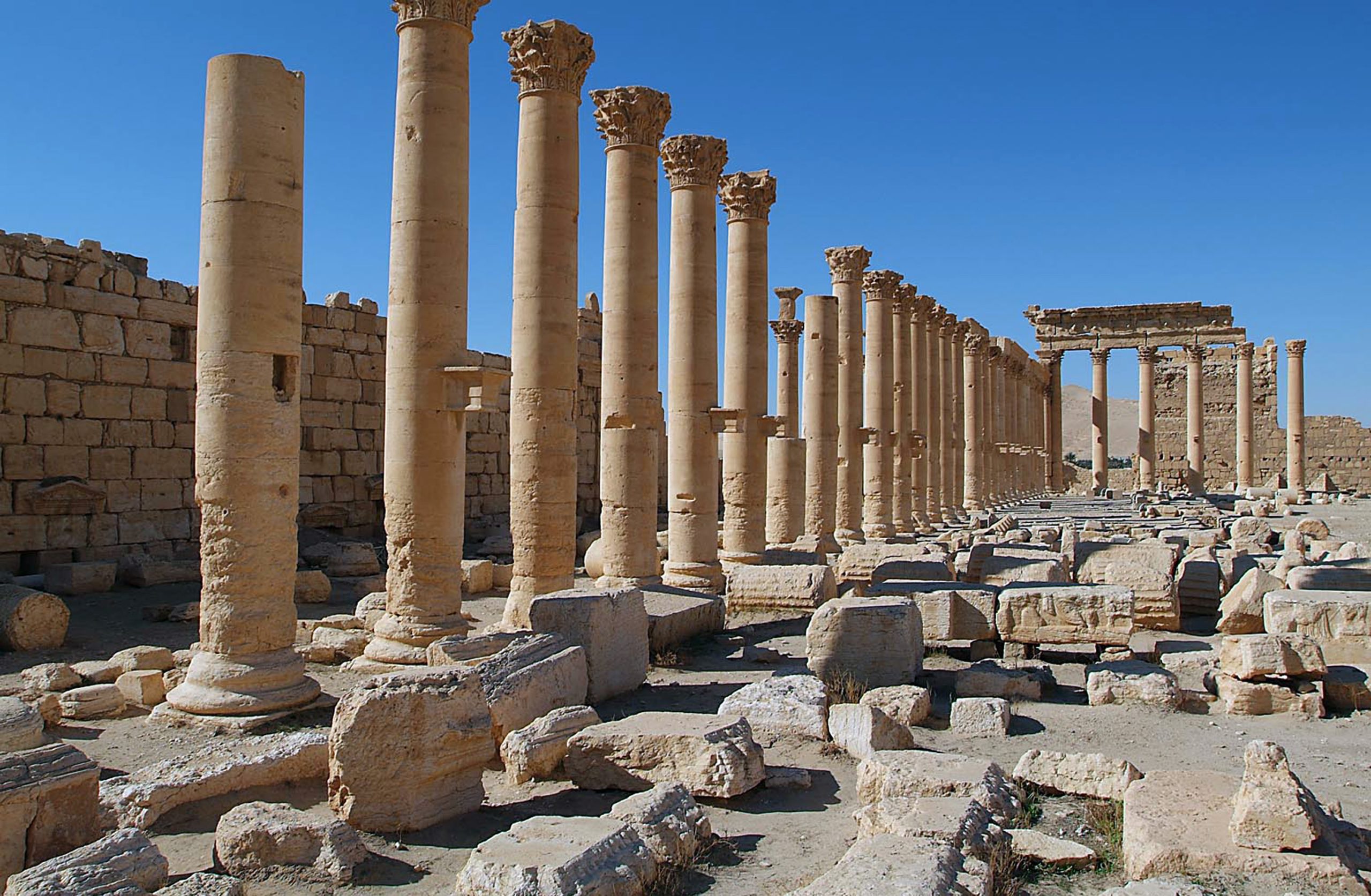Overview
Introduction to Palmyra
Palmyra, also known as Tadmor, is an ancient city located in present-day Syria. It is situated in an oasis in the Syrian Desert, northeast of Damascus. The city has a rich history that dates back to the Neolithic period, and it has been a significant cultural and trading center throughout the ages. Palmyra is renowned for its unique blend of Greco-Roman and Persian influences, which is reflected in its architecture, art, and culture. The city’s strategic location along the Silk Road made it a hub for trade between the East and the West. Today, Palmyra stands as a testament to the ingenuity and resilience of its inhabitants, and it continues to captivate visitors with its awe-inspiring ruins and captivating history.
Historical Significance of Palmyra
Palmyra holds immense historical significance as a thriving ancient city that served as a vital hub for trade and cultural exchange. Situated at the crossroads of several trade routes, Palmyra flourished during the 1st and 2nd centuries AD under the rule of the Palmyrene Empire. The city’s strategic location allowed it to become a melting pot of diverse cultures, blending influences from the Roman, Greek, and Persian civilizations. Palmyra’s architectural marvels, such as the monumental colonnade and the Temple of Bel, showcased the city’s grandeur and artistic prowess. The discovery and preservation of ancient artifacts from Palmyra have provided invaluable insights into the daily lives, customs, and beliefs of its inhabitants. These artifacts, ranging from exquisite sculptures to intricate jewelry, offer a glimpse into the rich cultural heritage of this ancient civilization. Despite the challenges posed by conflicts and the protection of these treasures from the ravages of time and human destruction, ongoing efforts continue to shed light on Palmyra’s past and ensure its legacy survives for future generations.
Key Events in Palmyra’s History
Palmyra has witnessed several significant events throughout its history, shaping its cultural and political landscape. One notable event was the Armed Uprising by Wagner Group, a private military company, in 2016. This event had a profound impact on the city, leading to the temporary occupation of Palmyra by the group. The armed conflict resulted in the destruction of several historical sites and artifacts, causing irreparable damage to the rich heritage of Palmyra. Despite these challenges, ongoing efforts are being made to restore and preserve the remaining cultural treasures of this ancient city.
Archaeological Discoveries

Excavations at Palmyra
Excavations at Palmyra have revealed a wealth of information about the ancient city and its inhabitants. Archaeologists have meticulously uncovered a plethora of artifacts that provide insight into the daily lives, customs, and beliefs of the people who lived in Palmyra. These excavations have unearthed ancient pottery, statues, jewelry, and even inscriptions that shed light on the city’s history. The meticulous documentation of these discoveries has allowed researchers to piece together the layout of the city and understand its architectural features. The excavation sites have also provided valuable data for scientific analysis, including the study of the genetics of camel spiders. By examining the remains found at Palmyra, scientists have been able to gain a better understanding of the genetic makeup and evolutionary history of these fascinating creatures.
Uncovering Ancient Artifacts
During the excavations at Palmyra, archaeologists have made remarkable discoveries that shed light on the city’s rich history. Ancient artifacts have been unearthed, providing valuable insights into the daily life, culture, and trade of the people who once inhabited this ancient city. These artifacts include intricate sculptures, exquisite jewelry, and well-preserved pottery. The meticulous documentation and analysis of these artifacts have allowed researchers to piece together the puzzle of Palmyra’s past. The use of advanced technologies, such as AI solving archaeological mysteries, has also played a significant role in deciphering the secrets hidden within these ancient objects. Through the combination of traditional archaeological methods and cutting-edge technologies, archaeologists continue to uncover fascinating details about Palmyra’s ancient civilization.
Revealing the City’s Layout
Revealing the City’s Layout
The layout of Palmyra provides valuable insights into the city’s urban planning and architectural design. Excavations have uncovered a well-organized street system, with wide avenues and narrow alleys that connected different parts of the city. The main thoroughfare, known as the Colonnade, was lined with impressive columns and adorned with statues and monuments. The city also featured a central marketplace, known as the Agora, where residents gathered to trade and socialize. Additionally, the discovery of residential areas, complete with intricate mosaics and frescoes, offers a glimpse into the daily lives of Palmyra’s inhabitants. These findings highlight the city’s prosperity and cultural richness, as well as its ability to withstand the test of time. The survivor’s of Palmyra’s layout provide valuable clues about the city’s past and contribute to our understanding of its historical significance.
Mysterious Disappearances

The Vanishing of Queen Zenobia
One of the most intriguing mysteries surrounding Palmyra is the disappearance of Queen Zenobia. Zenobia was a powerful ruler who led the Palmyrene Empire in the 3rd century AD. She defied the Roman Empire and expanded her kingdom, but her reign came to an abrupt end when she mysteriously vanished. There are various theories surrounding her disappearance, ranging from capture by the Romans to her escape to a hidden location. Despite extensive research and investigations, the true fate of Queen Zenobia remains unknown, leaving historians and archaeologists puzzled.
The Lost Treasure of Palmyra
One of the most intriguing mysteries surrounding Palmyra is the lost treasure that is believed to be hidden within the ancient city. According to historical accounts, Palmyra was known for its wealth and prosperity, and it is said that Queen Zenobia amassed a vast fortune during her reign. However, when the city fell to the Roman Empire in 273 AD, the treasure mysteriously disappeared. Many theories and legends have emerged over the years, speculating on the whereabouts of the treasure. Some believe that it was hidden in secret underground chambers, while others suggest that it was looted and taken to distant lands. Despite numerous attempts to locate the treasure, it remains undiscovered to this day, adding to the allure and mystique of Palmyra’s history.
Unexplained Disappearances of Explorers
While Palmyra has captivated explorers and archaeologists for centuries, it is also known for the unexplained disappearances of several brave individuals who ventured into its ancient ruins. These disappearances have puzzled researchers and sparked numerous theories and speculations. One such case is the mysterious vanishing of a group of explorers who were on a quest to uncover the secrets of Palmyra’s hidden treasures. Despite extensive search efforts, no trace of the explorers or their belongings has ever been found. This baffling incident has only added to the enigma surrounding Palmyra and its rich history. Another intriguing disappearance is that of a renowned archaeologist who dedicated his life to studying the ancient city. He vanished without a trace while conducting excavations in a particularly mysterious area of Palmyra. The circumstances surrounding his disappearance remain a mystery, leaving researchers and historians perplexed. These unexplained disappearances serve as a reminder of the mysteries that still lie within Palmyra’s ancient walls, waiting to be unraveled.
Modern-Day Investigations

Efforts to Preserve Palmyra
Preserving the ancient city of Palmyra has been a top priority for archaeologists, historians, and cultural organizations around the world. Numerous initiatives have been undertaken to protect and conserve the invaluable heritage of Palmyra, which has faced significant threats over the years. These efforts include documenting and cataloging the archaeological sites and artifacts, implementing restoration projects to repair and stabilize the damaged structures, and raising awareness about the importance of preserving Palmyra’s cultural and historical significance. International collaborations and partnerships have played a crucial role in supporting these preservation endeavors, with organizations such as UNESCO actively working to safeguard Palmyra’s legacy. Despite the challenges posed by conflict and vandalism, the determination to safeguard Palmyra’s rich heritage continues, ensuring that future generations can appreciate and learn from this remarkable ancient city.
Contemporary Research and Analysis
Contemporary research and analysis have played a crucial role in unraveling the mysteries of Palmyra. Scholars and archaeologists have employed various scientific techniques and methodologies to gain a deeper understanding of the ancient city and its inhabitants. Through the use of carbon dating, geophysical surveys, and 3D modeling, researchers have been able to reconstruct the city’s architecture and layout, providing valuable insights into its urban planning. Moreover, the application of remote sensing technologies has allowed experts to identify previously unknown structures and features buried beneath the desert sands. These advancements in technology have led to the discovery of ancient tombs, temple complexes, and elaborate mosaics, shedding light on the rich cultural heritage of Palmyra. The latest discoveries, such as the enigmatic Tully monster, continue to captivate the imagination of researchers, raising new questions and avenues for exploration. As contemporary investigations progress, the collaboration between international teams and local authorities remains essential in preserving and documenting the archaeological treasures of Palmyra.
Current Challenges and Future Prospects
Despite the ongoing efforts to preserve Palmyra and continue with contemporary research and analysis, there are several challenges that need to be addressed for the future prospects of the ancient city. One of the main challenges is the damage caused by the conflict in the region, which has resulted in the destruction of important historical sites and artifacts. Another challenge is the looting and illegal trade of antiquities, which not only deprives Palmyra of its rich cultural heritage but also contributes to the funding of illicit activities. Additionally, the lack of funding and resources for restoration and conservation efforts poses a significant obstacle. However, despite these challenges, the archaeological discoveries made in Palmyra provide a window into the ancient city’s glorious past, offering valuable insights into its history, culture, and architecture.
Avid Writer with invaluable knowledge of Humanity!
Upcoming historian with over 30 million views online.
“You make your own life.”





